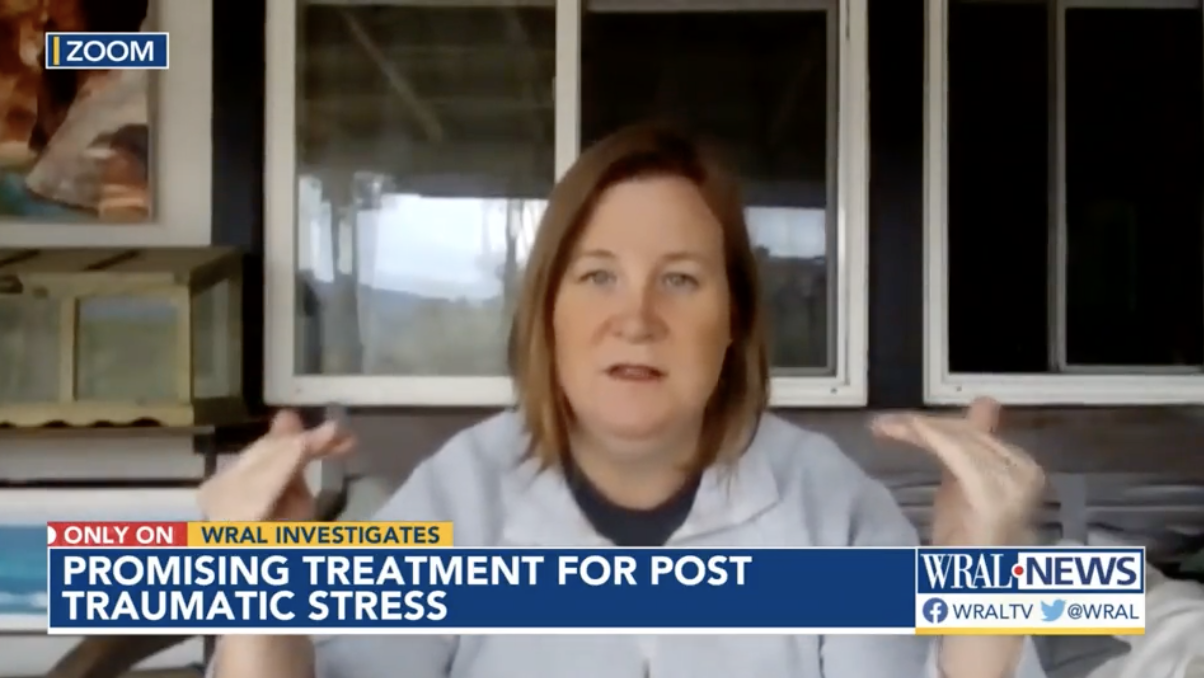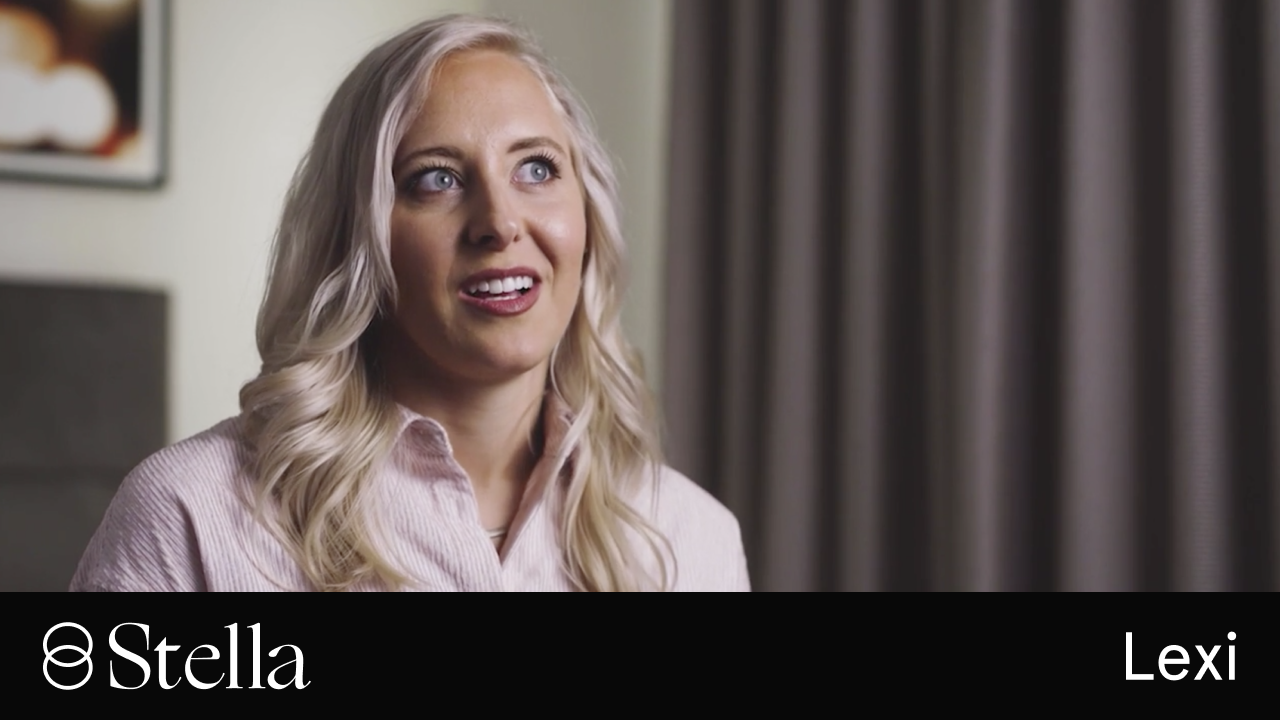How the Stellate Ganglion Block (SGB) Can Augment Treatment Plans

The following article refers to PTSD (Post-Traumatic Stress Disorder), whereas at Stella, we use the term PTSI (Post-Traumatic Stress Injury). We encourage you to adopt this language to break the stigma against Post-Traumatic Stress. Read more about the shift from PTSD to PSTI here.
While sixty percent of men and fifty percent of women experience a trauma at least once in their lives the impact of trauma can vary greatly from person to person.1 That means that each healing journey is unique.
When we’re seeking relief from symptoms following trauma, many options come up: pharmaceutical drugs, exposure therapy, EMDR, insight-oriented therapy, RTM, yoga, mindfulness-based stress reduction… The list goes on.
For many, the formula for lasting relief combines biological and psychological interventions. Think ketamine infusion therapy plus group therapy or EMDR therapy plus daily meditation.
The idea of researching all available treatments can be daunting. And deciding where to start our healing journey – or what to add to it – takes time and serious consideration. That’s where Stella comes in.
In this article, we explain what the Stellate Ganglion Block by Stella is and how it can treat symptoms of PTSD (which Stella refers to as PTSI). We’ll also describe how we create a custom plan for each person we work with – because we don’t believe in a one-size-fits-all approach.
What Is The Stellate Ganglion Block?
When we experience trauma, our body’s fight-or-flight response turns on and sometimes it stays on long after the traumatic event. Brain imagery data suggests that trauma symptoms cause changes that are visible in the brain.1 Dr. Eugene Lipov, Stella’s Chief Medical Officer, not only published the first case report exploring the use of SGB to proactively address trauma symptoms, but also published the first unified theory of how SGB works.
Dr. Lipov suggests that the local anesthetic temporarily “turns off” the Stellate Ganglion, which has been sending signals via nerve pathways to the amygdala, causing nerve growth.2
The Stellate Ganglion Block (SGB) is an injection of local anesthetic into the stellate ganglion – a bundle of nerves in the neck – that helps restore normal biological function and can efficiently relieve even the most severe trauma symptoms. This can stop the nerve growth that is occurring as well as eliminate or prune the extra nerve fibers that have been created, thereby resetting the amygdala to its pre-trauma state.2
Stella continually refers to emerging research and practice standards and is committed to using the most innovative methods available across our nationwide network of care. Instead of using the standard SGB protocol, which was developed for pain, we provide a “Dual Sympathetic Reset” to give those we work with the best chance of achieving a positive outcome.
The Benefits of SGB by Stella
We do not require trauma histories.
Before procedures, our Patient Care Team simply needs to know what symptoms are being experienced. They collect this information with a short, online test called the PTSD Checklist (PCL). Next, the score is reviewed and additional background information is collected. We’ll then discuss symptoms in further detail to help determine whether SGB is the right treatment path.
Most are surprised to learn that SGB is an effective treatment option regardless of gender, trauma type, age, PTSD-related medication use, or history of suicide attempts.4
SGB can accelerate the positive impact of existing treatments.
Feel like we’ve hit a plateau or are too overwhelmed by trauma symptoms to attend therapy is common – and SGB may be able to help. After SGB, a sense of calm may be felt which allows for a new type of participation in therapy that may have felt impossible before.
SGB can be done at any point on a healing journey.
Whether trauma was experienced months or decades ago, SGB may be a good treatment option.
SGB takes less than 20 minutes.
The injection itself takes less than 20 minutes. On the day of the procedure, expect to spend several hours at the Treatment Center to allow time for check-in, Twilight Sedation (if desired), the SGB, and follow-up observation.
SGB is safe.
Who performs the Stellate Ganglion Block? Every Stella doctor is Board-Certified and is personally trained by Stella’s Chief Medical Officer Dr. Lipov in our proprietary SGB methodology. We also require our doctors to use image guidance for correct needle placement.
Interested in learning what medication is used in a Stellate Ganglion Block? The local anesthetics Stella uses are Bupivacaine or Ropivacaine, both of which are FDA-approved.
Serious side effects are extremely rare.
Stella’s Clinical Approach
Stella takes a trauma-informed approach to treatment and communication. We recognize that we all experiences and processes trauma differently. Our Patient Care Team will meet you exactly where you are. We’ll provide all information needed to confidently make decisions about treatment.
We respect the relationships had with mental health care providers, doctors, or other healers because they share the same goal as Stella: to help those experience symptoms find lasting relief. We’re committed to building a world where no one needlessly suffers from the symptoms of trauma. Pairing our breakthrough Stellate Ganglion Block procedure with treatments from other skilled providers gets us one step closer.
PTSD Medications & SGB
Before scheduling the Stellate Ganglion Block (SGB) treatment, a dedicated Patient Care Coordinator will review any medications actively being taking. Most prescription medications that treat symptoms of trauma do not interact with either of the local anesthetics – Bupivacaine or Ropivacaine – that Stella doctors use for SGB.
After SGB, working with prescribing providers is recommended. They may decrease some medications or suggest taper off them altogether because the trauma symptoms are not as severe as they were before SGB. Others wish to stay on their medications. In all cases, we strongly encourage those who receive SGB to continue working with their prescribing providers to make the best decisions for their wellbeing.
Like many other medical procedures and surgeries, Stella requires that blood thinners are stopped in the days before the SGB procedure as they can cause problems.
SGB & Other Therapies
The Stellate Ganglion Block (SGB) is just one part of the healing journey. For when we feel out of control in our bodies or alone in a room full of people, SGB has the potential to restore a sense of calm and clarity we crave. And when paired with skilled therapy, SGB can be life-changing. Again, the best outcomes are often the result of combining biological and psychological interventions.
Mental healthcare providers can help maximize and maintain SGB’s positive impacts. For example, when we aren’t distracted by our symptoms, it becomes easier to be fully present during therapy sessions and thus integrate takeaways into everyday life.
We think that those who received SGB by Stella put it best:
“I’m not as fearful or panicked as I was, but I’m still working through my anxiety with my therapist. She has hope for me and feels like I have made a good leap in my process.”
“I feel like [SGB] has been a HUGE turning point in my healing. It’s allowed me to start a spiritual 12-step program that requires intense vulnerability in a group setting. I can feel appropriate emotions but not get triggered by others’ trauma. This is a first.”
If you’re a mental health care provider who is looking to join Stella’s mission to end the needless suffering caused by emotional trauma, please find more information about how to collaborate with Stella here.
How To Learn More
Tune in to our monthly webinar Treating Trauma: The Stella Approach hosted by Stella co-founder and leading trauma expert Dr. Shauna Springer and Stella Patient Ambassador Paul Whitmer. This webinar deep dives into how the Stellate Ganglion Block (SGB) addresses symptoms of emotional trauma.
You can also find more information on the “How SGB Works” page of our website. And if you’re looking for SGB treatments for PTSD (which Stella refers to as PTSI), explore Stella locations here.
- Alkire, M.T., Hollifield, M., Khoshsar, R., Nguyen, L., Alley, S. R., and Reist, C. (2015). Neuroimaging suggests that stellate ganglion block improves post-traumatic stress disorder (PTSD) through an amygdala mediated mechanism. Presented at the Anesthesiology Annual Meeting, October 24, 2015.
- Eugene G.LipovaJaydeep R.JoshiaSarahSandersaKonstantin V.Slavinb A unifying theory linking the prolonged efficacy of the stellate ganglion block for the treatment of chronic regional pain syndrome (CRPS), hot flashes, and posttraumatic stress disorder (PTSD) https://www.sciencedirect.com/science/article/abs/pii/S0306987709000413
- U.S. Department of Veterans Affairs. (2018, September 13). How Common is PTSD in Adults? U.S. Department of Veterans Affairs. Retrieved February 2, 2022, from https://www.ptsd.va.gov/understand/common/common_adults.asp
- Lipov, E. G., Jacobs, R., Springer, S., Candido, K. D., & Knezevic, N. N. (2022). Utility of Cervical Sympathetic Block in Treating Post-Traumatic Stress Disorder in Multiple Cohorts: A Retrospective Analysis. Pain Physician, 25(1), 77-85. Available from: https://www.painphysicianjournal.com/current/pdf?article=NzM5Nw%3D%3D






